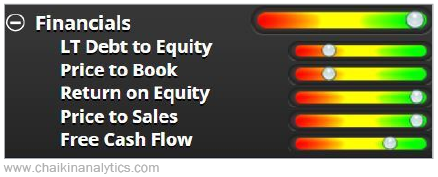Folks, we’re on the cusp of a major reshuffling in the stock market…
The Federal Reserve announced last month that it plans to stop its bond purchases in March. After that, the central bank expects to raise interest rates – perhaps as many as three times in 2022.
In other words… the cost of borrowing for companies is about to go way up.
When that happens, companies will need to allocate capital a lot smarter. Making a small mistake and putting money to use in the wrong project will hurt a lot more than in the current world of near-zero rates.
Today, I’ll explain why that’s important for investors. And I’ll highlight a couple of steps you can take right now to make sure you’re ready as this shift plays out in the months ahead…
In short, earnings seasons are about to be “supercharged”… Companies’ quarterly updates will soon become a lot more important and volatile than they’ve been for the past 40 years.
As the cost of borrowing goes up this year, investors will be watching companies closer than ever. And any signs of questionable capital-allocation choices in their 10-Q quarterly reports or related conference calls will likely lead to sell-offs in their stocks.
It makes sense… Every quarter, 10-Q reports give investors a look into what companies are doing. With the cost of borrowing set to rise, leadership teams will be forced to make tough decisions… And the choices they make will lead to a wide range of reactions from investors.
Fortunately, you can be proactive when it comes to this shift. My advice is twofold…
First, sign up for a good “earnings calendar” service (or learn the report dates for your holdings). Then, about two weeks before each company in your portfolio is set to report earnings, decide whether you want to deal with the volatility or not.
Even more importantly, pay close attention to the metrics that reflect a management team’s behavior and efficiency. You need to get better about figuring out the types of companies you’re investing in – what management is like and how it’s using debt to fund its operations.
This is where our proprietary “Power Gauge” system proves to be invaluable…
Many of its factors directly reveal information about management efficiency. The system also provides an indirect look into management efficiency through what the experts think at any given time.
For example, the Power Gauge grades the ratio of a company’s long-term debt to equity. It tells you how heavily a company relies on debt to fund new projects.
The system also ranks return on equity. That’s an extremely powerful tool to assess management behavior…
Return on equity shows how well the company uses the money it gets from stock investors.
The market might not have been sensitive to this metric when “easy money” covered up a company’s problems… But you better believe that will change as the Fed shifts its stance.
Both of these metrics are in the Financials category of the Power Gauge. As you can see in the screenshot below, each company is graded from “very bearish” (red) to “very bullish” (green)…

The Power Gauge also contains other important, indirect metrics for management efficiency within the Experts category – such as analyst rating trend…
This factor reflects the beliefs of the experts in the field. These experts create their own ratings based on their thoughts about management and a company’s future prospects. The Power Gauge aggregates all these experts’ assessments into a single grade…

In the end, folks, the Fed is closing the door as we head into 2022… Quantitative easing will decrease, borrowing money will become more expensive, and growth will become more difficult.
It’s that simple.
The companies with outstanding management teams will allocate their resources the best… They’ll be the companies that grow. The companies that don’t allocate well will be hit hard.
This major reshuffling will be most obvious during earnings season. That’s when new information floods the market. And things will be supercharged moving forward.
So make sure you have the proper tools – like the Power Gauge – at your side to assess this flood of information. In the coming months, that will be more important than ever.
Good investing,
Karina Kovalcik